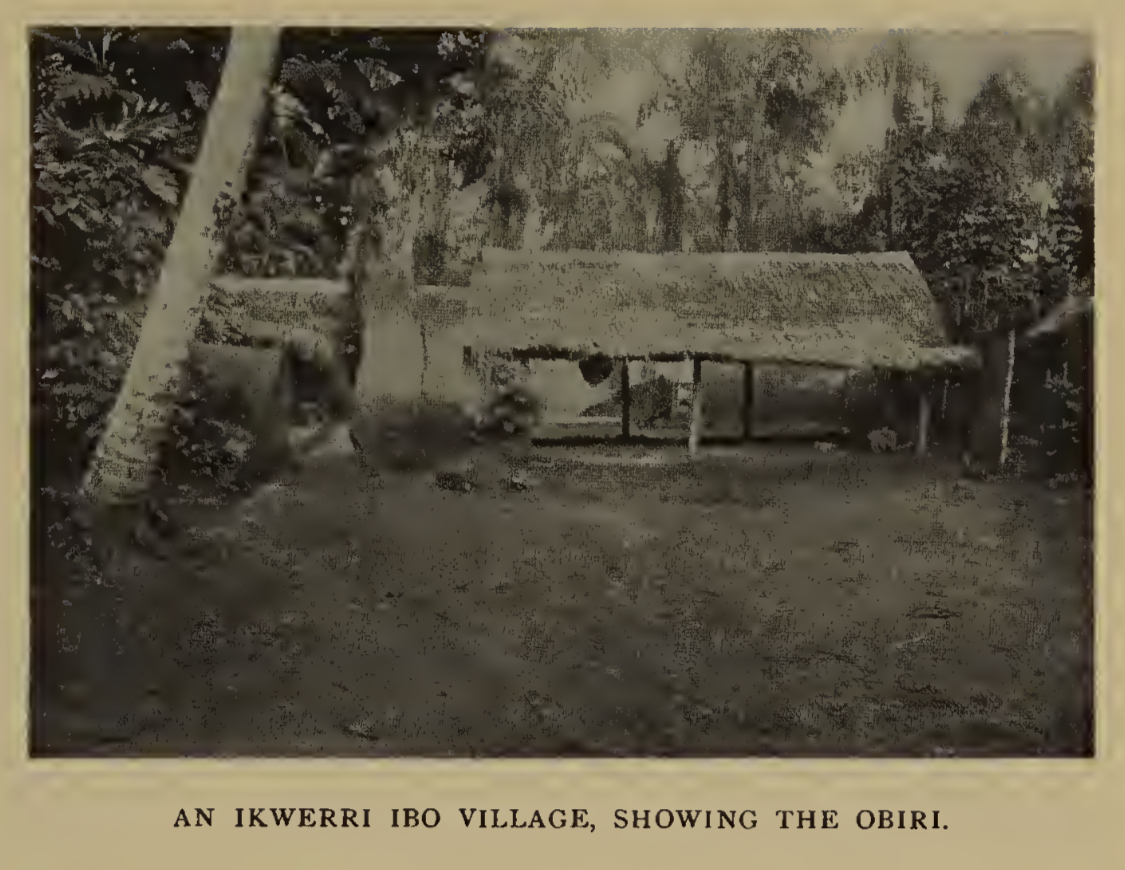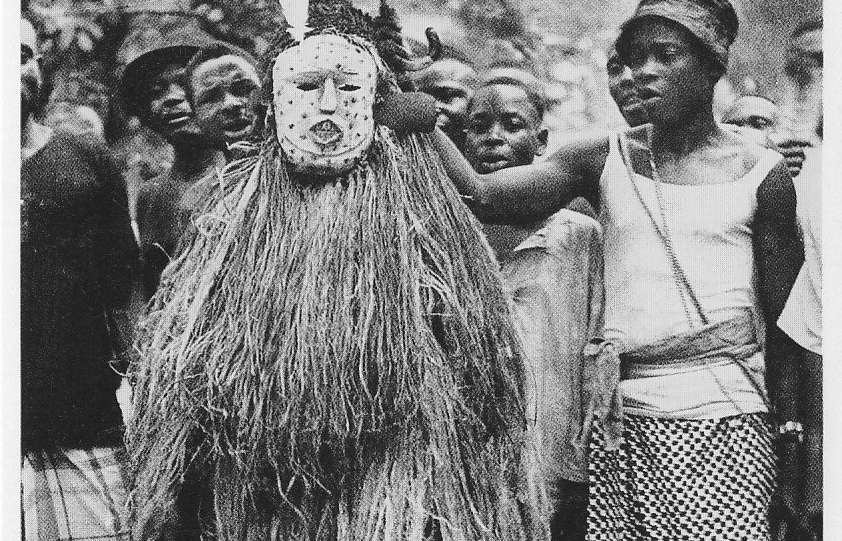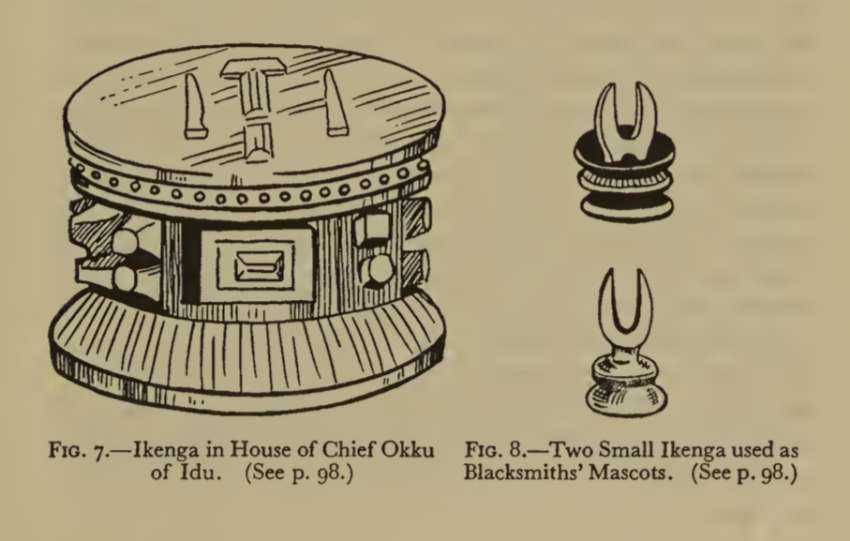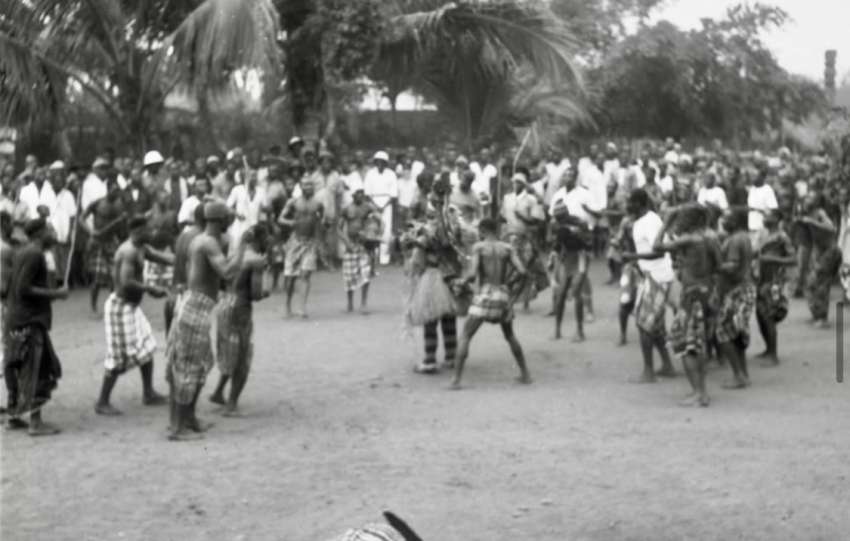
The “Obiri” in a typical Igbo village refers to a communal gathering space or meeting house, central to community life.
From the photo, it’s an open-air structure where village elders, leaders, and members gather for discussions, decision-making, and other communal events. The architectural style often reflects local materials such as mud walls, thatched or metal roofing, and wooden or bamboo pillars.
For a detailed visualization: the obiri would be a central, semi-enclosed structure in the village. Surrounding it might be traditional huts with conical thatched roofs, small paths leading to farms, and a marketplace nearby.
Large trees could provide shade, and the environment would show signs of daily village activities like women gathering water or preparing food, children playing, and elders sitting around, discussing community affairs.
Reference:
Tribes of the Niger Delta – P. A. Talbot, 1930s




